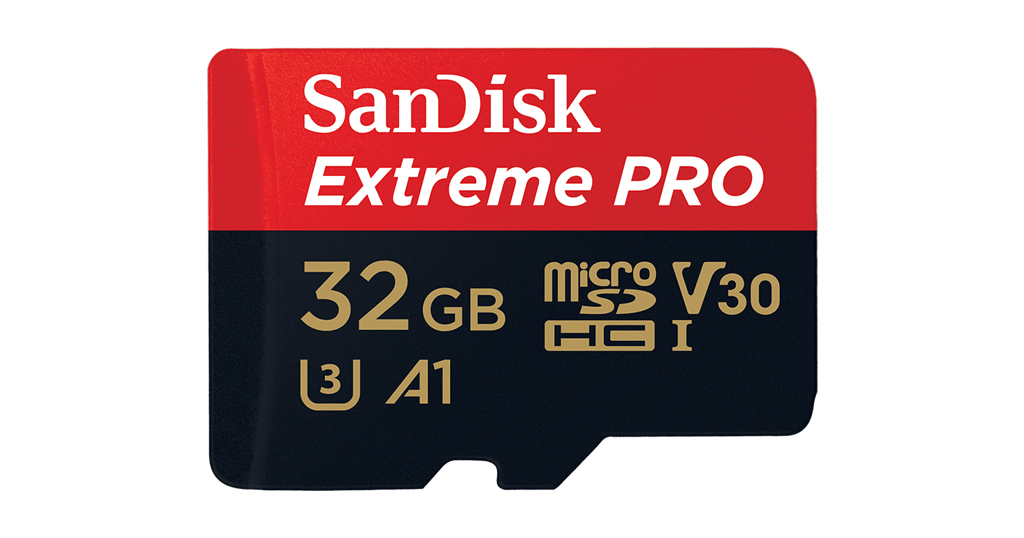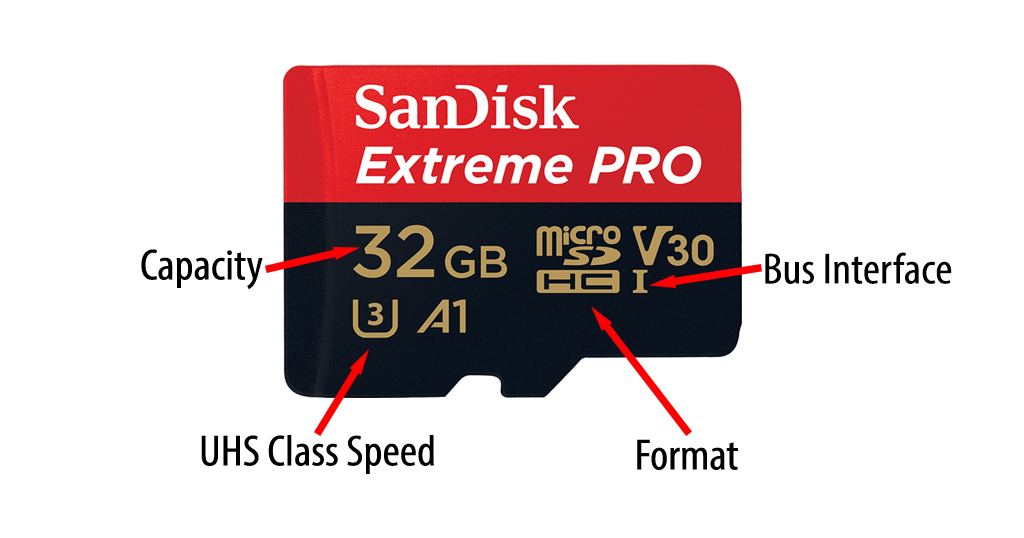The markings found on SD or microSD cards provide essential information for users to determine the card's suitability for specific purposes. These markings include details about memory capacity, minimum read and write speeds, and various speed classes.

Cards prominently display their memory capacity, typically in gigabytes (GB). While less common, some cards may indicate capacity in megabytes (MB). For instance, a card might be labeled as 64 GB.

Four memory format markings categorize cards based on their range:
SD or SDSC (Standard Capacity): Maximum of 2 GB (could be less).
SDHC (High Capacity): Ranges from 2 to 32 GB.
SDXC (Extended Capacity): Ranges from 32 GB to 2 Terabytes.
SDUC (Ultra Capacity): Ranges from 2 to 128 TB (uncommon).
Speed Classes
Three main speed classes are employed to determine a card's suitability for specific applications:
Speed Class: Represented by a number in a circle (e.g., 2, 4, 6, 10). Class 10 is suitable for burst shooting, full HD, some 4K filming, and raw photography.
UHS (Ultra High) Speed Class: Indicated by a number inside a U, with Class 1 at 10 MB/s (equivalent to speed class 10) and Class 3 at 30 MB/s. UHS Class 3 is often required for ultra-high resolution filmmaking.
Video Speed Class: Varies from V6 (6 MB/s) to V90 (90 MB/s). V60 and V90 speeds are essential for filming in 8K.
Bus Speed Class
Another relevant speed class is the Bus Speed Class, determined by peak bus throughput:
Default Speed (DS): 12.5 MB/s
High Speed (HS): 25 MB/s
Ultra-High Speed I (UHS-I): 50-104 MB/s
Ultra-High Speed II (UHS-II): 156-312 MB/s
Ultra-High Speed III (UHS-III): 213-624 MB/s
SD Express: 985-1969 MB/s, 1969-3964 MB/s
UHS-I operates in Half Duplex mode, while UHS-II and III support Full Duplex. SD Express always runs in Full Duplex.
Random Read Performance
The ability to handle random data instructions (measured in IOPs) is crucial for consistent system performance. The Application Class A1 and A2 standards, introduced in 2015, include the following ratings:
A1: Random read performance 1500 IOPs, random write performance 500 IOPs.
A2: Random read performance 4000 IOPs, random write performance 2000 IOPs. A2-rated cards also require hardware support and ensure a video speed rating of at least V10 (10 MB/s minimum read and write speed).

When DJI released the Mini 5 Pro , one of the biggest debates among drone...
READ MORE
1. Design & Obstacle Detection From leaked images, the Mini 5 Pro closely...
READ MORE
🛡️ Insurance Is Mandatory Whether you’re flying for fun or for work, drone insurance...
READ MORE
The DJI Mavic 4 Pro represents a bold step forward in drone technology, built for...
READ MORE
I finally received my DJI Mavic 4 Pro last Thursday after months of eagerly waiting...
READ MORE
Radiomaster has recently launched the SBUS Wireless Trainer Module , a compact and affordable solution...
READ MORE
The release of DJI’s O4 system has sparked excitement among FPV pilots, but some users...
READ MORE
The highly anticipated DJI Mavic 4 Pro is set to launch soon, and new leaks...
READ MORE
The DJI O4 Air Unit Pro represents a significant advancement in the realm of FPV...
READ MORE
The DJI Glide is not your average drone. This innovative concept, designed by Baptiste Grenon...
READ MORE
Exciting news is on the horizon for FPV enthusiasts as DJI prepares to release...
READ MORE
As a Maltese traveler, visiting Morocco offers an unforgettable experience, full of vibrant culture, diverse...
READ MORE